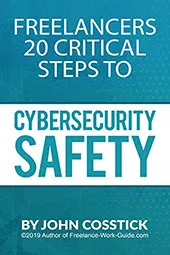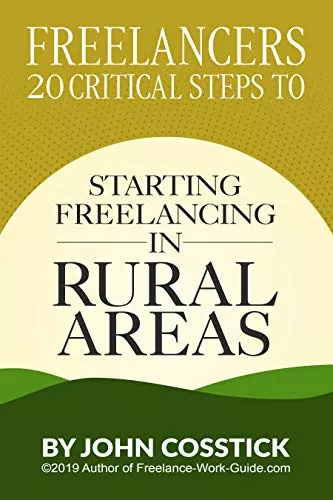Scammers try to steal money or personal info by being deceitful. It’s important to know how to handle them to stay safe online and offline. This guide will show you how to spot fraud and react correctly.
Good strategies include staying calm and looking at the facts. It will teach you to recognize scam signs and protect yourself. You’ll get useful tips for dealing with scams in everyday life.
Key Takeaways
- Stay calm and avoid engaging further with suspicious contacts.
- Document all communication as part of how to deal with a scammer.
- • Report scams to authorities such as the FTC (U.S.), Action Fraud (UK), Scamwatch (Australia), or your local law enforcement or cybercrime unit.
- Use security tools to block suspicious accounts and messages.
- Sharing experiences helps others avoid falling for the same tricks.
Understanding Scammer Tactics
To keep yourself safe, it’s key to know how scammers work. Learning to spot their tricks can help you stay out of trouble. Scammers have many ways to trick people, and they keep finding new ones as technology gets better. According to a 2023 Federal Trade Commission report, imposter scams were the most commonly reported type, reinforcing the importance of vigilance and awareness. [Source: https://www.ftc.gov/news-events/data-visualizations/data-spotlight/2023-imposter-scams. Newer scams now leverage deepfake videos and AI-generated voices to impersonate family members or executives, making them harder to detect. It’s crucial to verify identities through multiple channels before acting on requests involving money or personal data.
Common Techniques Employed by Scammers
- Urgency: They rush you, saying you must act fast, like “wire money now or face arrest.”
- Fake Authority: They pretend to be from government agencies, banks, or tech support.
- Phishing: They send fake emails or use fake websites to steal your personal info.
- Gift or Prize Deception: They say you won something but need to pay a fee first.
Psychological Triggers and Manipulation Methods
Scammers use emotions to get past your defenses. They might:
- Fear: Scare you with threats of legal trouble or health issues.
- Trust Exploitation: Act like a friend or coworker on social media.
- Greed: Offer easy money for a small investment.
Evolution of Scam Strategies Over Time
Old tricks like phone calls are now online. Today’s scams include:
- AI-generated voice calls that sound like someone you know.
- Social media scams that go after your personal info.
- Ransomware attacks that ask for cryptocurrency payments.
Early Warning Signs of a Scam
Early warning signs can protect you from scams. Knowing these signs is key to avoiding online scams. Being aware of red flags helps defend against fraud.
Recognizing Suspicious Behavior
Look out for these warning signs:
- Unexpected contact: Calls, emails, or messages from unknown senders demanding immediate action.
- Pressure tactics: Demands to share passwords, financial details, or payment methods instantly.
- Unusual requests: Questions about bank accounts, Social Security numbers, or other sensitive data.
Identifying Red Flags in Communication
Watch for these in messages:
- Grammar errors: Misspellings or broken sentences in official-looking emails or websites.
- Threats of penalties: Warnings of legal action or account closures to force compliance.
- Unmatched details: Links to unfamiliar domains or contact information that doesn’t match official records.
These signs point to risky situations. Paying attention to them can stop fraud. Stay alert to protect your personal and financial info.

How to Deal with a Scammer
Acting quickly is key when you think you’ve been scammed. Follow these steps to protect yourself and reduce harm.
Steps to Take Immediately
- Stop all communication right away. Don’t reply or share personal info.
- Block the scammer on apps, emails, or social media to stop further contact.
- Remember the scammer’s contact info when you talked and what they asked for.
Documenting Evidence of Fraud
Keep a detailed record of all interactions:
- Save screenshots or copies of messages, emails, or posts.
- Write down dates, times, and details of the scam attempt.
- Track any financial transactions related to the scam for future disputes.
Engaging with Trusted Advisors
Get help from experts:
- Call your bank or credit card company to freeze accounts if money was stolen.
- Report the scam to the FTC at ReportFraud.ftc.gov.
- Talk to legal aid services or local police for further advice.
Responding Appropriately to Suspicious Communications
When you get messages that seem off, it’s important to stay calm. Scammers try to rush you into making quick decisions. So, take your time to think about each detail carefully.
Don’t rush into giving out personal info or acting fast on urgent messages. It’s better to slow down and think before acting.
Best Practices for Online Interactions
- Verify sender identities by contacting organizations through official channels, not links provided
- Pause before clicking links—hover to check URLs match legitimate domains
- Never share passwords, banking details, or social security numbers via email or messaging
How to Verify Information Sources
Here’s how to check if the info is real:
- Search official websites for contact details
- Use reverse image search for suspicious media
- Contact companies directly via published phone numbers
If you’re still unsure, stop talking to the person. Keep records of your conversations. Then, report fraudulent activity to places like the FTC or FBI’s Internet Crime Complaint Center. Quick action helps keep others safe.

Online Safety and Scam Prevention Tips
Keeping safe online means taking steps to block unauthorized access and protect your data. These scam prevention tips cover tools and habits to lower risks. Begin by picking platforms known for their strong security.
Utilizing Secure Platforms and Tools
Choose services like Google Workspace or Microsoft 365 for their end-to-end encryption. Use browser extensions like HTTPS Everywhere to ensure secure connections. Stay away from public Wi-Fi for important transactions; use a VPN instead.
Implementing Two-Factor Authentication
- Turn on 2FA on accounts with authenticators like Authy or Google Authenticator.
- Avoid SMS-based 2FA because of SIM swapping risks.
- Use physical security keys for banking or financial apps.
Regular Updates and Security Practices
Update software right away when you’re asked to. Make sure devices and apps update automatically. Scan devices weekly with tools like Malwarebytes. Never ignore security alerts—they warn of vulnerabilities before scammers do.
By following these steps, you create a strong defense system. Choose tools that fit your online activities. Check your settings every few months to keep your protection up to date.
Avoiding Common Online Scams
To avoid online scams, it’s important to know their many forms. Scammers use phishing emails, fake websites, and impersonation to trick people. Stay informed to spot these tactics early.
Understanding Different Scam Formats
Scammers use many ways to deceive people. Some common scams include:
- Phishing emails that look like they’re from banks or retailers
- Tech support calls that ask for money right away
- Romance scams on dating sites
- Fake job listings that ask for personal info
- Lottery scams that claim you’ve won a prize
- For example, romance scams trick victims into fake relationships to request money, while tech support scams impersonate legitimate companies to gain access to your devices. In 2023 alone, consumers in the U.S. reported over $10 billion in scam-related losses, according to the FTC.
Preparing for Phishing and Impersonation
To protect yourself, do the following:
- Check the email sender’s address for small mistakes
- Don’t click on links in unexpected emails
- Use browser tools like Google’s Safe Browsing
- Report any suspicious activity to the FTC
Resources like the FTC’s consumer information portal give updates on scams. Stay alert by checking alerts from trusted sources often.
Protecting Personal Information Online
Keeping your personal data safe is key to avoiding scams and identity theft. Use unique passwords for every account. This helps prevent breaches. Tools like LastPass or Bitwarden make managing passwords easy without needing to remember complex codes.
- Enable privacy settings on social media platforms like Facebook and Instagram to control who views posts and profiles.
- Avoid sharing full birthdates, addresses, or financial details online unless verifying the recipient’s legitimacy.
- Regularly review app permissions on smartphones to ensure no unauthorized access to data.
Check bank and email accounts weekly for any unauthorized activity. Set up account alerts via text or email for quick fraud detection. Also, update software and apps regularly to close security gaps.
Never give out your Social Security number or bank details to unsolicited requests. Use privacy-focused browsers like Brave or extensions like Privacy Badger to block trackers. Also, check your credit reports regularly via AnnualCreditReport.com for any suspicious entries.
Reporting Fraudulent Activity and Scammers Online
It’s key to report scams to stop them and hold scammers accountable. Victims need to act fast to report scammers online. They should also work with authorities to shut down illegal operations.
How and Where to Report Scams
Here’s how to report scams:
- File a complaint with the FTC at FTC.gov using their online portal.
- Submit details to the IC3 (Internet Crime Complaint Center) for federal investigation tracking.
- Report abusive accounts on social media platforms via their “Report” features.
Cooperating with Law Enforcement
Give law enforcement:
- Exact dates and times of interactions
- Screen captures of messages or websites
- Bank records if financial fraud occurred
Contact local police for in-person reports involving significant losses.
Documenting the Incident Thoroughly
Keep detailed records including:
- Emails or messages saved as PDFs
- Timestamped screenshots
- Written logs of all communication attempts
Include copies of this documentation with every report scammer online submission.
Resources for Scammed Victim Help and Awareness
Victims of scams can find important support through special resources. Organizations offer guidance, steps to recover, and educational tools. Here are key places for scammed victim help:
Support Networks and Hotlines
- Federal Trade Commission (FTC) Complaint Assistant: Report scams and get recovery advice at FTC.gov.
- National Consumer Law Center: Offers legal referrals and scam prevention guides via their fraud hotline.
- AARP Fraud Watch Network: Free resources and a helpline for seniors facing scams.
Educational Materials and Online Courses
- FTC Consumer Information: Free guides on spotting scams and protecting finances (consumer.ftc.gov).
- BBB Scam Tracker: Tracks reported scams and provides prevention tips through interactive maps and alerts.
- IC3 (Internet Crime Complaint Center): Educational webinars and case studies for recognizing digital fraud.
Government and Nonprofit Organizations
- State Attorney General Offices: Many states offer fraud recovery units and victim compensation programs.
- Nonprofits like Fraud.org provide step-by-step recovery checklists and victim support forums.
- USA.gov Fraud Resources: Centralized federal assistance directory for reporting and recovery.
These resources help victims take action, recover losses, and avoid future scams. Always choose verified channels for safe and effective help.
Conclusion
Stopping online scams needs constant awareness and action. We’ve shared steps to help you protect yourself and others. These include verifying requests and reporting scams. Fraud prevention begins with spotting red flags. It also involves using tools like two-factor authentication. This helps keep your information safe.
Over the years, scams have evolved from simple phone calls to sophisticated phishing emails, fake websites, and even AI-generated voice impersonations. Staying informed about these trends is key to recognizing and avoiding new scam tactics as they arise
Keeping your personal info safe means updating your security settings often. It also means staying up-to-date with new scams. The FTC and state agencies offer tips on how to do this.
Sharing what you learn helps everyone stay safe online. This way, we all work together to fight cybercrime.
By following these steps, you lower your risk of falling victim to scams. Stay vigilant, use the right tools, and report any suspicious activity right away. These actions help protect your data and the online community.
FAQ
Q1: What should I do if I suspect I am communicating with a scammer?
If you think you’re talking to a scammer, stop talking to them right away. Keep all messages and evidence. Tell the Federal Trade Commission (FTC) or your local police about the scam. Ask trusted people for advice on what to do next.
Q2: How can I identify common scam tactics?
Scammers often send unsolicited offers or ask for personal info. They try to scare or rush you into action. Knowing these tricks can help you avoid scams.
Q3: What are some effective scam prevention tips?
To avoid scams, use safe websites for shopping and keep your software updated. Learn about common scams and watch for warning signs in messages.
Q4: How do I report fraudulent activity?
To report scams, call your local police and the FTC. Tell your bank or credit card company too. Keep all details of the scam for later use.
Q5: Where can I find help if I’ve been scammed?If you’ve been scammed, look for help from support groups, hotlines, and online resources. The FTC and local charities can offer advice and help with recovery.
Q6: What are some warning signs of a scam?
Watch out for messages you didn’t ask for, requests for money or personal info, and any info that doesn’t add up. Be careful of offers that seem too good to be true or that push you to act fast.
Q7: How can I protect my personal information online?
To keep your info safe, use strong passwords and turn on privacy settings on social media. Share less personal info online. Check your accounts often for any signs of trouble.
Q8: What should I do if I suspect that my identity has been stolen?
If you think your identity has been stolen, call your bank right away to lock your accounts. Tell the FTC and put a fraud alert on your credit reports. Watch your bank and credit card statements for anything strange.















